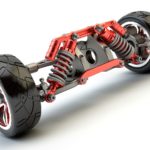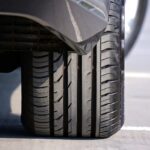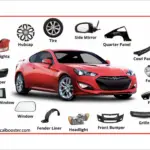We wouldn’t get very far without our tyres. Regardless of what kind of car you drive and what kind of driver you are, if your wheels are sporting the wrong tyres then your ride is not going to be ideal.
There are many different tyres of varying qualities that are suitable for different purposes. Just any old tyre, for example, is not going tobode well on a monstrous 4×4 machine. But is there a little more to choosing the right car tyres than just matching make and model?

Why are Tyres Important?
Your tyres are not only the only part of the car to make contact with the road but they are what give it traction. It doesn’t matter how powerful your car is, if your tyres can’t grip the road when the power is down, they’ll simply spin in place, rendering most of that impressive horsepower completely useless. But there is more to consider than just how your tyres look and whether it reaches the road or not.
Tyre Factors to Consider
Tread depth –
Tread depth significantly impacts how the car creates friction and grips different kinds of road and terrain. A higher and thicker tread depth, for example, is better for driving through mud, grass, water and general off-road driving. It is also more protected against punctures. A lower tread depth is more commonly used for track road racing where there’s minimal chance of encountering bumps or rocks in the road. The best tread depth for daily driving is above 1.6mm as this is the minimum tread to pass an MOT.
Quality –
Low-quality tyres often look suspiciously similar in design to their high-quality counterparts and will often be a lot more affordable. So we certainly wouldn’t blame you if you were tempted. However, cheap tyres will be more prone to wear and tear, punctures and flats, costing more to replace in the long run. Buying car tyres that are high quality and will last you much longer will give you the peace of mind that they won’t wear down on you within the first year.
Pressure –
As with tread depth, different pressure will work for different scenarios. High-pressure tyres, for example, are better at gripping the road. Lower pressure tyres, meanwhile, are generally better suited for off-road driving and are less likely to fall victim to punctures. They also have a larger surface area, allowing them to grip better in icy and snowy conditions.
Size –
Finally, the size of the tyres themselves will impact the drivability in a multitude of ways. Larger tyres will have better grip, cornering and braking. Not only that, but many might argue they are more aesthetically pleasing. Is bigger really always better though? Not necessarily. Bigger tyres mean also mean slower acceleration and harder steering, not to mention increased fuel consumption.
Generally speaking, choosing the right tyres is something you’re going to want help with unless you really know your stuff. But hopefully, we’ve been able to offer a little enlightenment here so you don’t end up with tyres that don’t fit, don’t grip and look bad.








